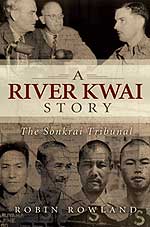For me, Rosemary Sutcliff created a world just as magic as Rowling’s. Somewhat like Hogwarts and Harry it was an alternative British universe. Many of her books followed one scattered family for a millennium or more, through the history of Britain from the ancient Celts through the Roman conquest and occupation, the collapse of the empire, the Saxon invasion and into the Middle Ages. It was both familiar (especially since my parents were British) and alien at the same time. Sutcliff’s universe was grounded in reality—she did extensive historical and archaeological research for each book.
Sutcliff’s McGuffin (to borrow the term from Alfred Hitchcock) was a ring with a carved emerald intaglio dolphin that belonged to the one of her first characters, Marcus Flavius Aquila, a Roman centurion posted to Britain. A thousand years and many books later it ends up on the finger of a young man descended from Vikings fighting the Norman conquest.
There were other characters who were not a direct part of that family, but are all connected in the tapestry of her ancient and medieval Britain.
A few days ago, as I emerged from writing my new epic about the Second World War, I came across a link to an article I wrote for CBC.ca on the movie King Arthur—and it comes from a Rosemary Sutcliff blog, “Blue Remembered “ (named for Sutcliff’s autobiography Blue Remembered Hills) at http://blueremembered.blogspot.com/
This I think shows that great advantage to the blogsphere. The micro and the macro. Blogs give people like the fans of Rosemary Sutcliff to reach out from around the world and come together.
Sutcliff wrote more than 50 books. Her popularity has faded over the years. Of course, in these days when publishers hestitate to promote their newest books, it will take word-of-blog in the 21st century to make sure kids and adults continue to enjoy her work (Sometimes when I want to sit and relax I pick up a Sutcliff I first read decades ago)
The story is often about a young person, usually a boy (which the market demanded when Sutcliff was writing in the 1950s and 1960s) ranging in age from about twelve to his early twenties. For Marcus Aquila in her breakthrough book, his military career is cut short by a serious wound in his first battle. That sends him into a quest beyond the frontiers of civilization--among the tribes north of the wall into what is now Scotland--to find out what happened to his father's Ninth Legion--while leaving him still wondering what his life is all about. His friend on this quest is Esca, from one of the border tribes, captured in battle, turned into a slave and gladiator, who then becomes Marcus's body slave--until he is freed.
The main theme of many of Sutcliff's books is the life of the soldier. Her father was a naval officer and she grew up in a military atmosphere. Although she was physically handicapped and spent part of her life in wheel chair, she captures the uncertain life of the intelligent human being who must become a fighter whether a member of a regular armed force or a warrior band or an individual trying to survive.
Sutlcliff had a unique viewpoint on the military, the insider who is also a somewhat removed observer, a combination of the kid sister (although she had no siblings), the know-it-all cousin or neighbor, and the chronicler (somewhat like Princess Irulan in Dune). Marcus Aquila Flavius thought he would be a career soldier, then finds the wound in his leg has changed his life....a fact of life facing many soldiers today. His descendent, Aquila, deserts his army to defend his home, becomes a slave and suffers throughout his life with what would, a millenia and half later, be called post traumatic stress disorder. Her soldiers are rounded human beings, with conflicting loyalties mixed with personal and family problems, always facing uncertainty in campaigns. An academic might say that all this was reflection of the decline of the British Empire. Sutlcliff had liked Kipling as a kid and it could be said that her books are the Kipling stories of that declining empire. But as our society has become more uncertain in the years since she wrote, the books are more relevant than ever.
The second theme is slavery. There is more than one failed gladiator in her books, and then there is a boy trying to find himself and his roots who is captured and enslaved as well as the defeated soldier.
And there is a spiritual element to all of Sutcliff. In her historical novels the spiritual is subtle, below the surface, not there casting spells as in today's high fantasy. The world is Celtic, with just the barest hints of the "other world" and the gods and fates possibly weaving the wyrd behind the scenes, while the humans are guided by their own free will.
For those parents out there who want their kids to move on from Rowling, I suggest Sutcliff should be on the list.
I'll touch on Sutcliff again the future--why not she was and is one of my favourite writers.
Technorati Tags
writing,Rosemary Sutcliff,
Harry Potter,PTSD,books, military,




